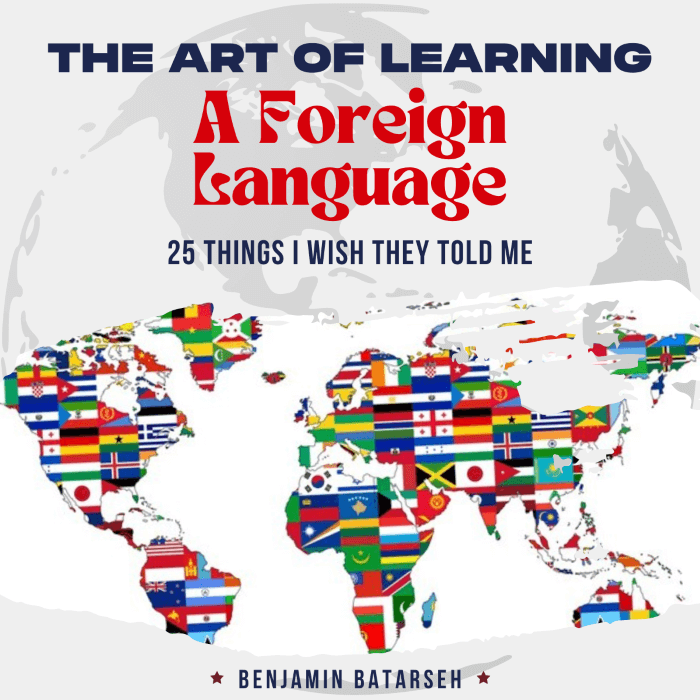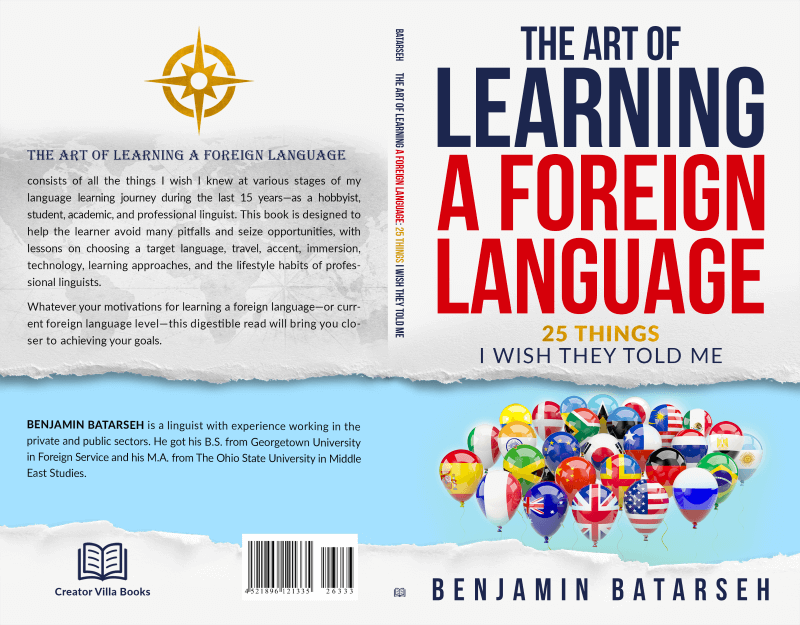
[My new book release, The Art of Learning a Foreign Language, is now available on Amazon!] Today, there more opportunities than ever before to travel and connect with people from all around the world. There is also greater access to quality dictionaries and language learning resources than at any point in history. The benefits of being bilingual and multilingual — culturally, economically, intellectually, and personally — are myriad. Foreign language study is a regular part of many people’s lives, and it is rare to meet someone who never studied a language for any length of time.
Today, I transcribed a clip from WatchMojo.com that ranks the Top 10 most useful languages in the world. Your list may vary depending on where you live, your ethnicity, your interests, and other individual considerations that inform the highly personal decision to study a foreign language.
Check out the complete video and transcript below, in descending order! What languages did they leave out and how would your list — and its underlying rationale — differ?
10. Portuguese
This Ibero-Romance language can be traced back to the Kingdom of Galicia and is rooted in variants of Vulgar Latin with a splash of Celtic phonology for good measure. This, thereby, makes it unique from the language it’s most often compared to, Spanish. While it’s considered more difficult than Spanish, it isn’t much harder than English or French, and shouldn’t be too much trouble to those interested in learning. With over 230 million speakers and the official language of many countries across the globe, including the upcoming economic force of Brazil, Portuguese is fast-becoming a very attractive language to master.
9. Russian
Considered the “easiest” of the hard languages, Russian is spoken by over 250 million people. Understanding Russian and the Cyrillic alphabet can aid in the learning of other languages and is a great foundation to have. It’s also considered a politically important language. Furthermore, if you’re into scientific and technical literature, then Russian is for you, as some of the world’s largest collections on both those subjects are in these East Slavic tongue. Or you could stick with the works of Tolstoy, Bulgakov, and Dostoevsky. As it’s geographically the most widely spoken language of all the Slavic languages, you can find native Russian speakers throughout Eurasia.
8. Japanese
Spoken by 125 million people, Japanese remains useful not only for business and Asian studies but also thanks to the ever-increasing influx of Japanese media in Western culture. Plus, it’s an enjoyable language to learn. On top of all that, you’ll be able to watch your favorite anime and Kurosawa films with the subtitles off. There is a catch, however. Japanese is arguably the most difficult language going. So, get ready to study a lot. Mixing three complex writing systems, levels of formality in speaking, and complex grammar, there’s a lot to know. Don’t let all of that discourage you. Ganbatte – that’s good luck to you.

7. Hindi
Along with English, this Indo-Aryan language, is one of the government of India’s two official languages, and it’s also one of the Republic’s 22 scheduled languages. Boasting over 260 native speakers, it’s one of the top 10 most spoken languages in the world. So, in short, you’d have a lot of people to talk to . While most commonly found in India, it’s also Fiji’s official language and is spoken significantly throughout Mauritius, Diana, Suriname and Trinidad and Tobago. So, if your travel plans have you venturing to any of those countries, Hindi suddenly becomes a useful language to learn. Or, at least, to master a couple of its phrases.
6. Arabic
This ancient Central-Semitic language was first spoken in North-Western Arabia all the way back in the Iron Age. Arabic continues its robust tradition and remains an important and well-used language. With up to 420 million speakers, it’s in increasingly high-demand, especially in the energy and security sectors. However, with its difficult writing system and very complex grammar, and dialects varying greatly, it’s an incredibly difficult language to learn. However, it’s not as foreign as you may think, as it’s already influenced Spanish and has given loanwords to English.
5. German
While previously though to be a language in decline, German is becoming more useful than ever as Germany gains a foothold as a major powerhouse in the EU. Spoken as a first language in several European countries, it’s the most used native language in the European Union. After English, Spanish, and sign language, it’s also one of the most studied languages in the US. Furthermore, understanding German will help to increase your comprehension of other Germanic languages. It’s considered on pa with English in terms of learning difficulty. It’s grammar is more complex, but then it’s also more logical, as well, and so it balances in the end.
4. French
Before English started to take over, French was the lingua franca of much of Europe. While the lion’s share of the 80 million native speakers of the language of love are in France, others can be found in North America, such as the Canadian provinces of Quebec and New Brunswick, as well as Africa, Southeast Asia, and parts of South America. It’s also a very important language in the European Union. Outside of travel, it’s very useful to those studying philosophy and for diplomats. On top of all that, it’s also just a very lovely language in general, giving any speaker a certain “je ne sais quoi.”
3. Spanish
A must for travelers to Latin America, South America, the Southern United States, and Spain, this is the language of Borges, Marquez, and Cervantes. As a bonus, this language, with the second greatest number of native speakers, after Mandarin Chinese, is considered one of the easiest to learn with straightforward grammar, pronunciations, and writing system. Of all the Romance languages, Spanish is thought to be one of the closest branches from the Latin roots, although it went from an evolution when the Moors brought over roughly 4,000 Arabic loanwords during the time of Al-Andalus. The official languages of 20 countries all over the world, Spanish is a very accessible and desirable language to have in your repertoire.

2. Mandarin Chinese
Mandarin Chinese is the official language of the People’s Republic of China, with over 950 million native speakers. With China on the rise as the next global superpower, Mandarin is becoming increasingly desirable as a language for both business and travel. Once you master the tricky tones, which can drastically change the meaning of a sentence, it’s considered relatively easy to speak, with practice. Likewise, the grammar system is considered easier than some of the other difficult languages. However, the writing system is notoriously tough. But, if you get this one down pat, you’ve earned some serious bragging rights.
1. English
Nearly anywhere you go anywhere in the world, most people will understand at least a little bit of this beautiful mess of a language, a true hodgepodge. Modern English has adopted a little of everything. While Old and Middle English are almost incomprehensible even to native speakers modern English is now the language of international business. And, in many countries, it’s hard to hold down high-level business and diplomatic jobs without knowing at least a little of this new lingua franca. Good thing it’s relatively easy to learn, if you ignore the non-sensical grammar and spelling rules.

